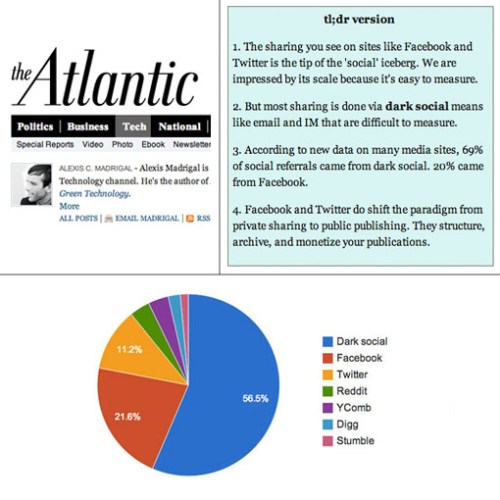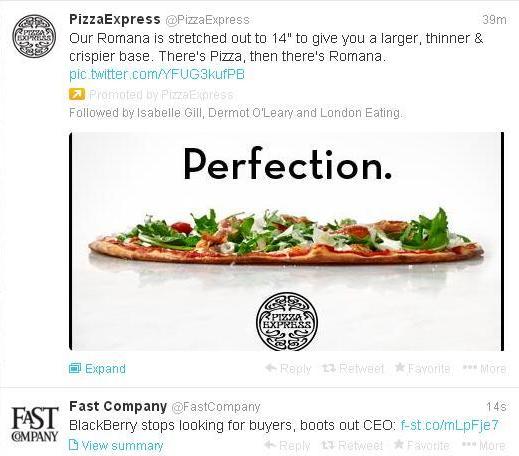In a previous post, I discussed the increasing importance of social media optimisation (SMO) at the expense of traditional SEO methods. This week, I’ll be looking at how traditional publishers are testing this theory with product launches that rely almost entirely on consumer behaviour on Twitter and Facebook.

Buzzfeed, a website that combines a platform for detecting viral content with an editorial process to provide a snapshot of “the viral web in realtime”, revealed that it had reached a record high of 130 million global unique users last month.
The company credited a lot of the growth to an increase in traffic coming from Facebook. However, Twitter referral traffic has also surged, with 180% growth in the past year. The seven-year-old site is experiencing breakneck growth, with global unique user numbers up 350% year-on-year.
more…
A key theme of the Corporate Social Media Summit (#csmeu) was how social media can help businesses achieve their strategic objectives.
Ian Robin, Director of Strategic Accounts EMEA at Hootsuite said that much of the confusion around linking the two can be traced back to how social media was originally adopted by organisations, usually in a ‘cottage industry’ fashion by individual departments who wanted to create awareness around a campaign. This approach worked to an extent but created variation across companies and without a clear vision of how social can be used in a strategically meaningful way.
To help unravel the confusion, some speakers at #csmeu gave best practice examples as to how approaches to social media have been tied back to clear business goals. Royal Mail uses Twitter to engage directly with and reply to customer complaints or queries. Martha Roberts, Head of Customer Support, explained that not only does this service help solve customers’ problems but also presents the opportunity to develop a rapport between staff and customers. Staff are given the freedom to use a personable tone of voice and this gives the company the opportunity to shine: not only is it a customer service exercise but also a great PR opportunity. As you can see from the photo below this approach has instilled improved consumer confidence. One of Royal Mail’s priorities is to be customer-focused and through this example you can trace it clearly back to what they’re all about.

more…
This post has Comments Off on The link between social and business objectives.
Social media marketing has evolved significantly over the past few years and keeping up with current trends can be crucial for success. One of the biggest changes we’ve seen is the shift towards image-centric marketing rather than traditional text.
According to Trend Reports, between 65 and 85 percent of people describe themselves as visual learners, which means that they digest information more easily by viewing an image than reading text. It’s hardly surprising, then, that image-based social networks such as Pinterest and Instagram are enjoying such high levels of user activity. Even academic journals, such as eLife and PeerJ, are opting for big photos and a clean, navigable design. Not to be left behind, more established social networks are now adapting their designs to meet these changing user needs.

more…
Some argue that search engine optimisation (SEO) is a flawed concept. At its best, it means no more than following best practice in creating clear, accessible websites with intelligible content and meaningful titles. At its worst, it means compromising on engaging content in an effort to perform better within the mysterious algorithms that determine order rankings in Google search.
To add insult to injury, a striking post by Dan Graziano reveals that organic results may now only make up 13% of a Google search. Despite Google achieving search dominance by providing the best organic results, the company has begun to replace organic results with ‘revenue generating Google products.’ Google’s Adwords account for 29% of the page, while a Google Map takes up 7% and the navigation bar occupies 14% of the page (see image below).

more…
This post has Comments Off on Is social media changing traditional search engine optimisation?.
Have a look at any website’s analytics and ‘direct traffic’ will appear as a source alongside referrers such as Google, Facebook and Twitter. It is widely assumed that this ‘direct traffic’ is made up of users bookmarking the site or typing a site’s URL directly into a browser. However, will many readers really type out a long article URL? Isn’t it more likely that the link has been shared in a private network, such as instant messengers or email, rather than typed?
As email clients and instant messaging platforms such as Skype are not recognised as referrers, links clicked on within these networks have had referral data stripped and therefore show as ‘direct traffic’. Known as ‘dark social‘, this is the more mysterious type of traffic, where links are shared in a private yet social way.

more…
Earlier this year we introduced the concept of native advertising, which in the context of the advertising world, is still a relatively new concept. In the space of a few years it has developed from a burgeoning and beneficial idea to what many believe will be the advertiser’s tool of the future. Initially picked up and tested by leading digital platforms, such as Google and Youtube, native ads are now a totally integrated part of online browsing.
Social networks in particular have assimilated native ads more than any other platforms, specifically with Facebook’s suggested posts and Twitter’s promoted tweets and users:


more…
This post has Comments Off on Going native: the right way forward for advertisers?.
As the internet continues to evolve, issues surrounding privacy remain a common cause for concern. There is growing anxiety among internet users of how their online activities are tracked for commercial purposes. The business model behind this is generally to aggregate a large number of users in order to sell that audience’s aggregate attention, usually in the form of advertising. After all, “If you’re not paying for it, you’re not the customer; you’re the product being sold.”

more…
Last month, on the eve of its fifteenth birthday, Google revealed its first brand new search engine algorithm since 2001; Hummingbird.
Unsurprising, Google has not given away any specific details but it has revealed that Hummingbird is focused on ranking information based on a more intelligent understanding of search requests. As online data volumes increase, we are expected to type more and more words into Google Search to achieve greater accuracy of results. Often we are required to conduct multiple searches to find the correct information, which can be a frustrating and protracted process.
The reason for this inefficiency is that the Search results we currently receive reflect the matching combination of key words that a search phrase contains, rather than the true meaning of the sentence itself. Search results produced by Hummingbird, however, will reflect the full semantic meaning of longer search phrases, and should in theory produce more accurate results.

more…
In our first two posts on social media tools, we looked at Klout, and its competitors. We also discussed the merits of a score as a quantifiable means of demonstrating influence. With questions being raised over the necessity of ranking people and accusations being levelled over the extent to which people manipulate such systems to increase their scores, a rising number of people are avoiding such numerical scoring tools altogether.
However, the level of interest in the impact of our online interactions remains high. People and brands want to know more than just their level of influence. They want to have varied but detailed information on things such as what people are talking about, who’s talking about them and how much they’re being talked about. To cater for this, a number of services are providing alternate systems for delivering this information. This week we’ll be looking at a selection of analytical tools that look at activity on social media to give individuals and brands an idea of how far influence extends, without apportioning a rank or score. more…
This post has Comments Off on Avoiding numerical-scoring analytical tools: Information without the aggravation.









